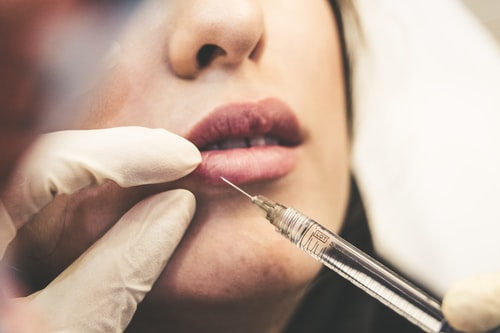Signs of Body Dysmorphia Following a Procedure
Body dysmorphia is the clinical term for a condition in which oneself, or one’s body parts, are perceived as ugly and defective. And while not every person who undergoes plastic surgery develops this disorder, it can be something to watch out for. This article details the signs of body dysmorphia that one may experience after undergoing plastic surgery.
1. Tremendous Fear of Surgery

Body dysmorphia is usually present in patients who are also suffering from body dysmorphic disorder, so it makes sense that someone fearful of surgery may be experiencing these types of thoughts.
However, the fear of surgery is often so acute that it becomes impossible for the individual to move forward with cosmetic or reconstructive surgery. If someone you know has this level of anxiety before a procedure, they may indeed be suffering from body dysmorphia. Urge them to seek help and counsel and help them overcome their anxiety to move forward with the surgery.
2. Disfigurement due to repeated surgical interventions
Depression after surgery isn’t a rare occurrence, but a lasting form of depressed mood that gets characterized by serious emotional distress is more of a rarity. If one has such an experience after surgery, the depression may be a result of body dysmorphia. This condition may motivate individuals to undergo repeated surgeries to correct supposed defects and make themselves feel better about their appearance.
3. Irrational thinking

You can observe in individuals with schizophrenia, but all individuals suffering from body dysmorphia are likely to exhibit irrational thinking. Body dysmorphic disorder gets characterized by extreme preoccupation with one’s body, and at least one of the hallmarks of body dysmorphia is a preoccupation with perceived defects regarding the self.
For example, some may believe that they’ve made themselves appear more feminine or masculine by undergoing extensive plastic surgery. However, the person’s appearance doesn’t necessarily change after surgery.
4. Excessive Criticism of appearance
Body dysmorphia is characterized by intense feelings of disgust regarding body parts, especially lip or nose blemishes or pimples. This can lead to excessive Criticism of one’s appearance.
A person suffering from body dysmorphic disorder will often find themselves making harsh remarks about their appearance or that of other people. It’s important to practice compassion and understanding when addressing the situation with the individual.
Treatment for body dysmorphia involves “cognitive behavioral therapy,” which involves learning to combat irrational thoughts by avoiding triggers that cause these feelings. This includes avoiding mirrors, seeking counseling, and avoiding plastic surgeries until achieving a better state of mental health.
For example, individuals afflicted with body dysmorphia may choose to avoid autobiographical mirrors or take anti-anxiety medication to relieve the symptoms.
5. Overcompensation

When someone has body dysmorphic disorder, they usually have the urge to overcompensate for their perceived imperfections. It’s common for those with this disorder to take extreme makeovers, including surgical interventions, to cover up perceived defects. When someone is suffering from body dysmorphia, it can be difficult to determine who’s the victim and who’s the perpetrator.
6. Obsessions or Hoarding of Plastic Surgery Scraps
Those who suffer from body dysmorphia will often obsess over plastic surgery scraps, including gauze, bandages, and other surgical devices. These items serve as a reminder of some perceived defect in the self, which the person then compulsively seeks out. The individual may also hoard these materials.
7. Perfectionism
The need to look perfect is a sign of body dysmorphic disorder. Perfectionism gets characterized by an individual’s inability to stop preoccupying themselves with their perceived flaws. The need to look perfect can lead people to excessive plastic surgery, which may ultimately be the cause of the problems instead of the solution, particularly when surgery conducted on one body part is meant to fix another.
8. Excessively Seeking Plastic Surgery

Those suffering from body dysmorphia may check themselves one hundred times in the mirror throughout the day. This results in obsessive thoughts regarding perceived defects, which often necessitates more plastic surgeries for this group. They may even suffer from the dental condition of bruxing, which means they chew on their fingernails or lips.
9. Obsessive-Compulsive Behavior
It’s common for those with body dysmorphic disorder to engage in compulsive behavior. Examples include constantly checking in the mirror and constantly combing their hair. When someone constantly checks in the mirror, it may be a sign of body dysmorphia.
The tendency to engage in excessive grooming or repetitive actions may also be a sign of body dysmorphia. For example, these individuals may continually check their appearance, scratch their arms or legs, or check their pulse.
10. Perception of Defects that are Not There
Those with body dysmorphic disorder will often obsess over features or normal body parts. For example, they may obsess over the size of their nose or the shape of their lips. But they may also be preoccupied with their perceived defects. A person suffering from body dysmorphia is not aware that their lips are normal and that the shape of their nose has nothing to do with its aesthetic appeal.
11. Likened to a Vermin
When it comes to body dysmorphic disorder, patients will often liken themselves to a vermin or insect. This term is a projection of negative feelings onto an object. In this case, the term is used as a form of self-hatred. Vermin get often linked to insects, who get seen as dirty or gross. Those suffering from body dysmorphia will often look at themselves in this way. They use the term ‘vermin’ because their feelings of hatred towards themselves are so severe.
12. Differentiate Between Self-Esteem and Body Dysmorphic Disorder
Many people may engage in cosmetic or reconstructive surgery due to self-esteem issues. However, comparing feelings of inadequacy with body dysmorphia is often difficult because one’s feelings may be deeply rooted in their self-perception. A person may develop self-esteem issues because of body dysmorphic disorder. If the person has gone through repeated surgeries and is still unable to feel happy with their appearance, they may have developed body dysmorphia due to their self-esteem issues.
Conclusion
This is a list of signs and symptoms to look out for to identify those suffering from body dysmorphic disorder. However, one must also be aware that these signs and symptoms may result from another psychiatric condition. Other mental disorders can mimic body dysmorphic disorder, such as borderline personality disorder.
Bonus for you: In terms of plastic surgery, you can get the best facelift. Just check out our exclusive guide.
Read Also:








